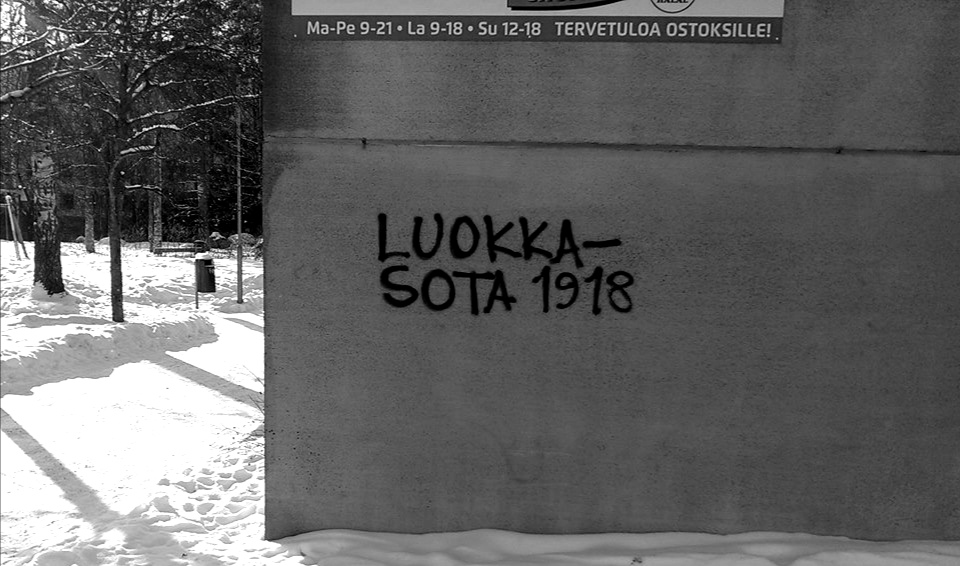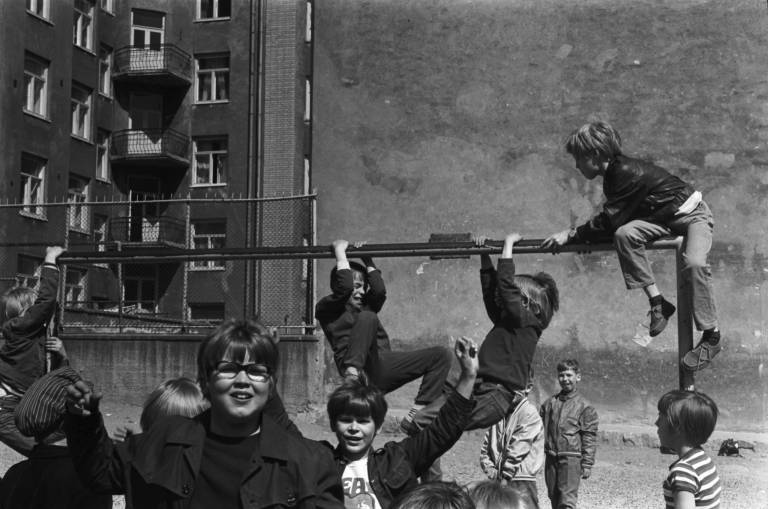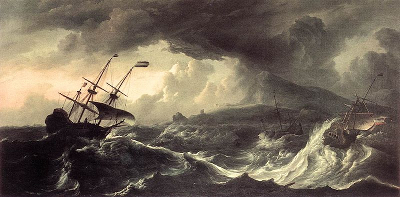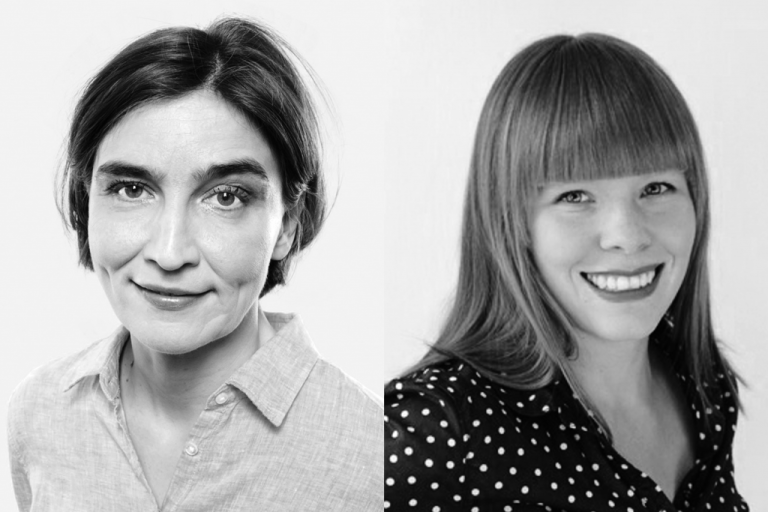Social classes are still with us. Finland is still a class society in which the class position determines the living conditions of individuals and families and in which education, income or risk of unemployment mostly depend on class.
Finland is still a class society in which the class position determines the living conditions of individuals and families and in which education, income or risk of unemployment mostly depend on class.
Inequality is an active topic in Finland. In March 2018, the Prime Minister’s Office published the final report of an inequality work group appointed by the then Prime Minister Juha Sipilä. The report defines inequality as a problem caused by structural factors. Inequality equals to underprivileges linked to structural and cultural divisions which confine an individual’s performance, functions and health. Inequality depends on class relations and differences between the social classes.
In sociology, the differences between social classes and the social borders are traditionally examined using the concept of class. The late American sociologist Erik Olin Wright (2005) stated that the idea of classes is one of the most controversial concepts in sociology. Some have claimed that the concept of social class is completely useless and dead (Pahl 1989). Others think that class is a key to understanding the entire modern society (Clegg et al. 1986). Despite the controversies, in social theory it is customary to describe inequality with the concept of class. Wright thought that class is an essential dimension within the historic variation of inequality and that economic subjugation and exploitation depend on class relations.
Class analysis has long traditions in sociology. It is possible to find various periods in theoretical discussions and in approaches to concrete research. Class analysis bloomed in the 1970s. In those days several class theories relying on the thinking of Karl Marx were brought forward (Luokkaprojekti 1984). The theoretical landscape of the 1980s was dominated by the discussion on middle classes (Crompton 2008). During the last ten years, approaches accentuating the significance of culture and cultural differences have garnered the most interest (Atkinson 2015). These are influenced by the thinking of Pierre Bourdieu.
The theoretical landscape of class analysis has changed. The traditional views are challenged by new interpretations, and the relevance of class analysis is debated. In the following sections I will consider the significance of class analysis at the beginning of this century. Firstly, I will present the interpretations of class relations of contemporary capitalism and analyze changes in the Finnish class structure. Secondly, I will discuss the current position of the middle class. The future of this class causes concern in many discussions. Lastly, I will ask whether the concept of class is still able to explain social divisions in the globalizing information society.
An overview of the Finnish class structure between years 1970 and 2015
Finland is currently a modern class society. Because of our history the concept of a class society has been politically charged. Mentioning classes has been considered inappropriate. As recently as 30 years ago this concept was immediately associated with politics, leftism and communism. In social sciences, too, class analysis was looked at with reserve. Although Heikki Waris published his pioneering study of social stratification 50 years ago (Waris 1948) and the position of the working class was examined by the communist party in the 1950s, the Finnish class structure was extensively studied in Finland as late as the 1980s (Alestalo 1986; Luokkaprojekti 1984).
The change of the Finnish class structure has been examined from the end of the 19th century (Alapuro 2017) to the present day (Saarinen et al. 2018). Approximately 150 years ago Finland was a class society in which over 70% of the population consisted of masses outside all classes. Over 80% of the labor force worked in agriculture, and the most common class denomination was a farm owner (Alapuro 2017). Arttu Saarinen et al. have examined the class positions of voters in the general elections of 2015. Their analysis shows that most voting women are office workers or customer service representatives as well as lower experts in social and cultural fields. Most men belong to wage workers or other workers. Thus almost a half of both women and men can be placed in these groups (Saarinen et al. 2018:134).
The class structure changes slowly. The prime influences are changes in economy and work distribution.
The class structure changes slowly. The prime influences are changes in economy and work distribution. The first remarkable turning point in Finland was that independent small farming became more common in the 1920s. Until the Second World War, Finland was mostly an agricultural society. The proportion of industrial and other wage work was significantly smaller than in other European countries. The second turning point was that wage work became prevalent in society. In other words, people moved from agriculture to the industry and service branch. This was a slow process between the end of the 1940s and the 1970s (Alestalo 1986). The third turning point was that wage workers became members of the middle class. The proportion of different expert and executive tasks has increased, while the amount of manual workers has decreased. This change began in the 1970s. The expansion of the precariat is an important topic nowadays (Suoranta et al. 2018). It is caused by changes in the labor market and by the concern and uncertainty related to them.
Still at the beginning of the 1970s, Finland was a society consisting of the working class and entrepreneurs. Over a half (54%) of the wage workers were members of the working class. The proportion of the working class had still increased compared to the 1960s. Almost a fourth (23%) of the active population were entrepreneurs. The majority (16%) of them were farmers. In 1960, the proportion of farmers remained at 28%. Only a small proportion (5%) of the population belonged to the upper middle class. The proportion of the lower middle class was approximately a fifth (18%). Compared to the 1960s, the relative growth of the lower middle class was the fastest. The Finnish society changed dramatically between 1960 and 1975. The percentage of wage workers increased, many people moved inside the country and almost half a million Finns emigrated to Sweden (Alestalo 1986, 64).
This representation of classes is very different from the situation in Finland at the beginning of the 1980s or in 1994. According to the survey data collected for Luokkaprojekti (Class Project) in 1981, the Finnish class structure nearly 40 years ago looked like this: the working class was still the largest category (48%), but the middle class had grown to include almost a third (31%) of the population. The same change continued in the mid-1990s: the middle class became more prevalent. The proportion of entrepreneurs (20%), especially farmers, decreased. The proportion of the working class (40%) decreased as well. The middle class continued to grow (40%). This category included as many wage workers as the working class (Blom & Melin 1998).
Table 1 shows the Finnish classes by gender in 2015. The class structure includes people who are wage workers. The empirical material used was a survey made for the ISSP (International Social Survey Programme). The number of wage workers (N) is 644. The class categories are entrepreneurs, upper middle class (supervisory role and with a university degree), lower middle class (supervisory role) and working class (other wage workers). The class criteria were the same in the descriptions in 1981 and 1994. The distribution of the year 1970 is based on occupational classification.
Table 1.The Finnish class structure by gender in 2015 (%).
| Class category | Women | Men | Total | N |
| Entrepreneurs | 9 | 18 | 14 | 89 |
| Upper middle class | 28 | 24 | 26 | 172 |
| Lower middle class | 27 | 19 | 23 | 154 |
| Working class | 36 | 39 | 37 | 249 |
| Total | 100 | 100 | 100 | 664 |
It can be stated that the Finnish society consists of approximately 15% of entrepreneurs, a half of the middle class and a third of the working class. The proportion of entrepreneurs has decreased over the last 50 years. In fact, the proportion of entrepreneurs of all wage workers is roughly 15% in each developed Western country. Finland is no exception. Most entrepreneurs are men; the proportion of women is 35%.
Only a little over the third (37%) belongs to the working class. The proportion of the working class is almost the same within men and women. Here an important change can be seen. Over the last 50 years, the majority of the members of the working class consisted of women. Now the working class includes more men because their proportion is 51%.
The biggest class category (49%) is the middle class of wage workers. It includes a half of the wage workers. The upper middle class is slightly bigger than the lower one. The proportion of women in the upper middle class is 53% and in the lower middle class 61%. The proportion of women in the middle class has increased. 25 years ago over a half of the middle class consisted of men. At the time, especially the upper middle class had a clear majority of women.
There have been four important changes in the Finnish class structure over the last 50 years. Firstly, the Finnish middle class is more prevalent. The proportions of both the upper and the lower middle class are significantly larger than ever before. If the middle class is interpreted to include entrepreneurs and wage workers, its proportion is 63%. Today’s Finland has thus a large middle class. Secondly, the proportion of the working class has become smaller. At the beginning of the 1980s, about a half of the wage workers belonged to the working class, in 2015 only over a third. The third important change in the class structure is the diminishing proportion of entrepreneurs. Only 40 years ago the proportion of entrepreneurs – especially agricultural ones – was over a fifth. Now, the proportion of entrepreneurs is 15%, and that of farmers less than 3%. The fourth significant change can be seen in the proportion of genders: there are more women in the middle class and fewer women in the working class.
The Middle Class
I have previously claimed that Finland is currently a society of the middle class. The concept of the middle class is disputed, however. People are concerned for the middle class. It is claimed to be diminishing and thus making society unstable. A European comparison study published a few years ago (Vaughan-Whitehead 2016) claims that the middle class is an essential element in maintaining economic growth and societal stability. Its contribution has nonetheless decreased in the 21st century because its proportion of all income earners has diminished. We can see the polarization of incomes – as well as of social classes – in which the proportions of the very rich and the very poor are increasing (ibid. 11).
There are many ways to understand the concept of the middle class. The Finnish Business and Policy Forum (EVA) published nearly two years ago (29 May 2018) an article called Tältä näyttää keskiluokka – kuusi tärkeää kuvaa meistä (The middle class looks like this – six important views of us; in Finnish). The article defined the middle class in accordance with the income. EVA used the OECD definition of the middle class. It states that the middle class includes households in which the available income is over 75% but less than 200% of the population’s median income. According to EVA, 3.7 million Finns or 68% of all are members of the middle class.
EVA regularly publishes reports of the state of the Finnish society. In spring 2018, EVA reflected on the Finnish middle class. According to its calculations (EVA 2018), two thirds of Finns belong to a category which has fared well. The report says that it is possible to talk about a robust middle class.
Based on the Eurostat statistics, EVA has also considered the proportion of the middle class in some EU countries. EVA says that the middle class is the largest class category in all compared countries. Thus, EVA is not as concerned as the authors of the European study mentioned above. The middle class is seemingly not under threat.
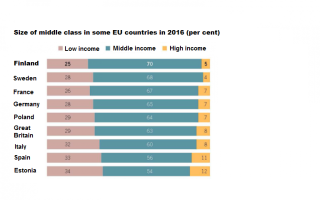
Source: EVA (Finnish Business and Policy Forum)
If income is used as the defining factor, no less than 68% of Finns are members of the middle class. The variation of income is large, however. If the average monthly income in 2017 was between 1,900 and 6,400 euros, the person belonged to the middle class.
The class membership is determined by the power and authority relations of the working life.
My own interpretation is that the class position is not defined by the income but by the power and authority relations in the ownership and working life. In addition, I think that also other aspects of work, like work autonomy, are important when setting a person to a certain class. In the middle class, it is possible to talk about the position as well as the definite project of a societal change. It is characterized by individualization (cultural and life style practices), by the aspirations to consume and by the confidence that education ensures the maintenance of the social position. This sort of a project is strong in the Finnish society (cf. Blom & Melin 2014). The increase of the middle class has been tightly connected with changes in economy and social policy. The Finnish policy has favored the middle class. It is totally another thing what will happen in the future.
Conclusions
Many researchers have claimed that classes are dead. Critics say that the concept of the social class is no longer capable to explain social divisions in the same way as it was when the world was industrialized or when Fordism still lived its golden age in the 1960s. It has been pointed out that new social divisions have become more significant, the relation between the class position and functioning in society has decreased and the ownership of enterprises has changed. The social divisions can be explained by gender, generation, ethnicity or religion instead of class (cf. Lee & Turner 1996)
The class structure based on occupations simplifies the complicated social reality.
In the last chapter of his book Luokaton Suomi? (Classless Finland?; in Finnish), Jani Erola notes that “classes exist and they will change with society. My opinion is similar. Erola stresses that social classes can be best assorted according to the social groups created by occupations” (Erola 201, 237). I disagree with that! The class structure based on occupations simplifies the complicated social reality. Class analysis needs a closer analysis of power and authority relations of working life.
Social classes are still with us. Finland is still a class society in which the class position determines the living conditions of individuals and families and in which education, income or risk of unemployment mostly depend on class. In working life, the class position structures the work and its nature. At any rate, the class structure has become differentiated in many ways.
Women are still in a very different position than men. The working class has changed so that the majority are men. There are significantly more men in various managerial positions but at the same time the middle class consists mainly of women. For example, in 2017, in the education resulting in a degree, the proportion of women of all students was 53%. The variation by the field of education was large: in the humanities and the educational sector, the proportion of women was 75%, in the social and health sector 67%, but in the technical and traffic sector only 22%. In addition to gender, generation and region are still important in the differentiation of the class structure. The proportion of the working class is high in older generations, and the upper middle class is more common in towns than on the countryside.
The British sociologist Mike Savage has in several of his social studies considered classes and the significance of class analysis. His latest book (Savage 2015) describes British classes at the beginning of this century. The study Social Class in the 21st Century is based on material which is collected by the BBC and contains over 160,000 answers. It does not question class theories or their validity, but it tells what it feels like to live in a certain class. It describes in detail the inequalities of our time. The pertinent message of the book is that classes are not dead. The book also illustrates that the expert knowledge is not an impartial tool helping to show social structures. Savage and others claim that the expert knowledge is tightly knit with the class relations and the symbolic power. Simultaneously they use their own expert knowledge to increase our understanding of the changing class relations of this century.
Translation by Veli-Pekka Ketola. The translator is a Master’s-level student of Multilingual Communication and Translation Studies at Tampere University. The translation was produced as part of a project course in English Translation. The article was originally published in Finnish in 2019.
References
Alapuro Risto, 2017, Valtio ja vallankumous Suomessa. Vastapaino, Tampere
Alestalo Matti, 1986, Structural Change, Classes and the State. Research group for comparative sociology. University of Helsinki No. 33, Helsinki.
Atkinson Will, 2015, Class. Polity Press, Cambridge.
Blom Raimo and Melin Harri, 2014, Keskiluokkaistuuko Suomi? In Lempiäinen and Silvasti (eds.): Eriarvoisuuden rakenteet, 20–51
Clegg Stewart, Boreham Paul and Dow Geoff, 1986, Class, Politics and the Economy. Routledge, London.
Crompton Rosemary, 2008, Class and Stratification. Polity Press, Cambridge.
Erola Jani, 2010, Luokaton Suomi? Yhteiskuntaluokat 2000-luvun Suomessa. Gaudeamus, Helsinki.
EVA, 2018, Vankistuva keskiluokka. EVA, Helsinki
ILO, 2019, Working for a brighter future. ILO, Geneve.
Lee David and Turner Brian, 1996, Conflicts about Class. Longman, London.
Luokkaprojekti, 1984, Suomalaiset luokkakuvassa. Vastapaino, Tampere.
Pahl Ray E., 1989, “Is the emperor naked? Some comments on the adequacy of sociological theory in urban and regional research”. International Journal of Urban and Regional Research Vol 13, 127-129.
The Prime Minister’s Office, 2018, Eriarvoisuutta käsitelleen työryhmän loppuraportti. VNK:n julkaisuja 1/2018, Helsinki.
Saarinen Arttu, Koivula Aki, Koiranen Ilkka and Sivonen Jukka, 2018, Kolmijaosta hienojakoisempiin eroihin? Tarkastelussa kuuden suurimman eduskuntapuolueen jäsenistöjen ammattirakenteet. Yhteiskuntapolitiikka Vol 83 No 2, 132-146.
Savage Mike, 2015, Social Class in the 21st Century. Pelican books, Milton Keynes.
Standing Guy, 2011, The Precariat. The New Dangerous Class. Bloomsbury, London.
Suoranta Anu and Leinikki Sikke (eds.), 2018, Rapautuvan palkkatyön yhteiskunta. Vastapaino. Tampere.
Vaughan-Whitehead Daniel (ed.), 2016, Europe’s disappearing middle class? Evidence from the world of work. Edward Elgar, London.
Waris, Heikki, 1948, Suomalaisen yhteiskunnan rakenne. Otava, Helsinki.
Wright Erik Olin, 2005, Social Class. In: Ritzer (ed.) Encyclopedia of Social Theory. Sage, New York. DOI: http://dx.doi.org/10.4135/978141295255


